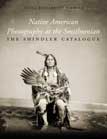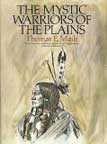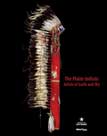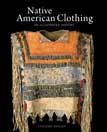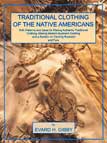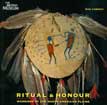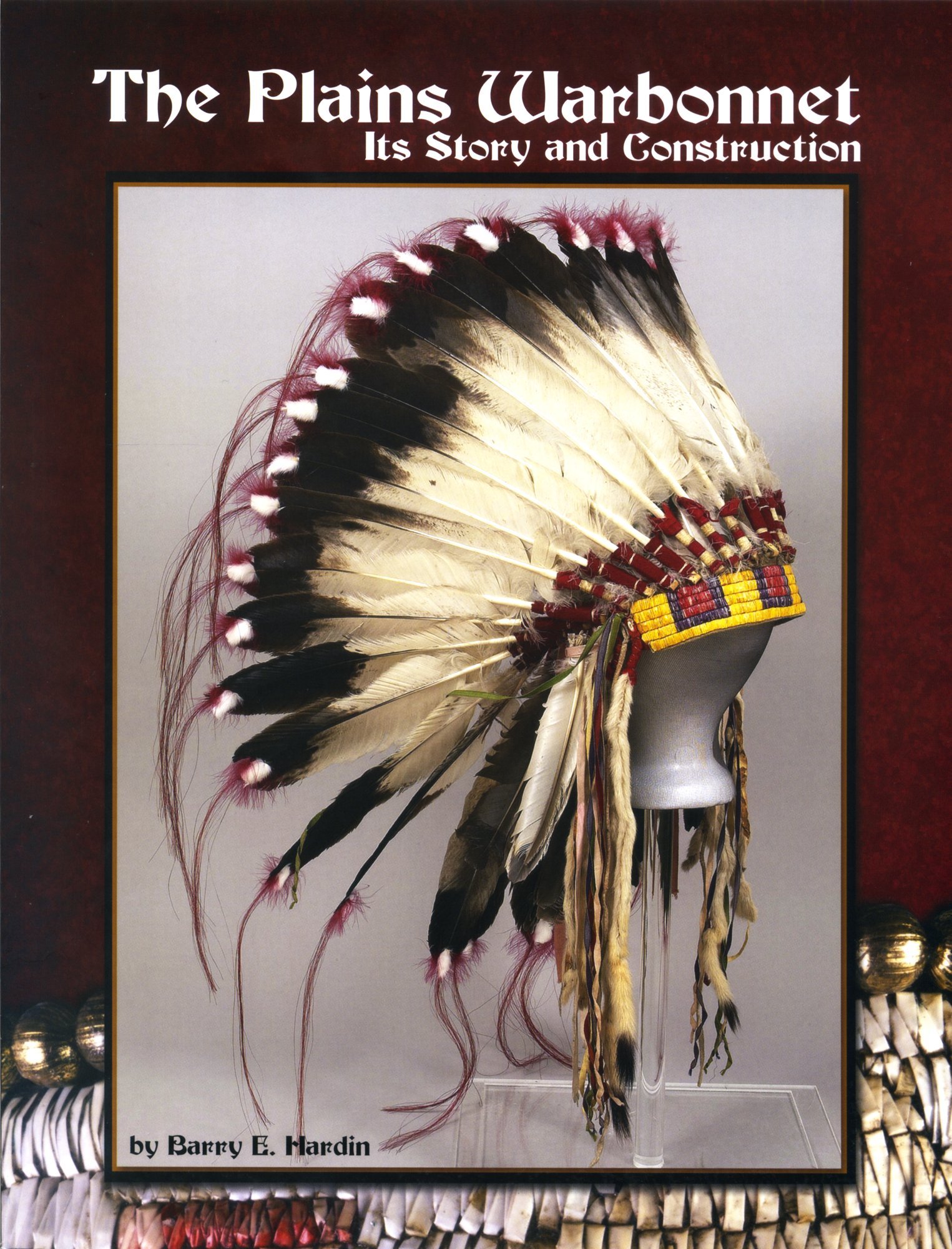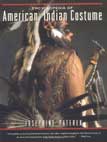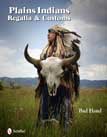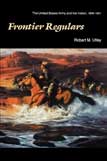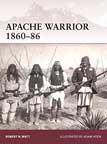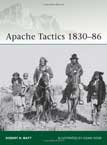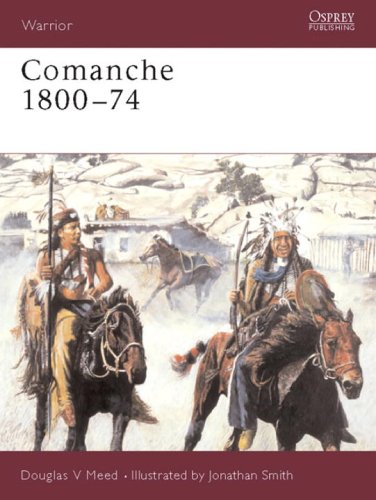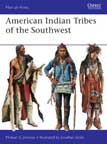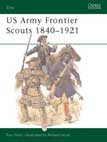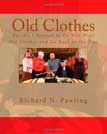

Even among the mighty mountain men, Jim Bridger was a towering figure. He was one of the greatest explorers and pathfinders in American history. He couldn't write his name, but at eighteen he had braved the fury of the Missouri, ascending it in a keelboat flotilla commanded by that stalwart Mike Fink. By 1824, when he was only twenty, he had discovered the Great Salt Lake. Later he was to open the Overland Route, which was the path of the Overland Stage, the Pony Express, and the Union Pacific. One of the foremost trappers in the Rocky Mountain Fur Company, he was a legend in his own time as well as ours. He remains one of the most important scouts and guides in the history of the West.
The Christian Science Monitor has called this biography "probably the fairest portrait of Jim Bridger in existence." The New York Times has praise for a "painstaking job of research among the usual Bridger sources and among some others which have been neglected. . . . [The author] has adequately set the scene for his hero's adventures and has honestly appraised the great guide's historical stature.
In 1830, 16-year-old Osborne Russell left his Maine farm and ran away to sea. He didn't like it. He ended up joining an expedition headed to Oregon by way of the Rocky Mountains. Along the way he acquired the skills necessary for survival in the mountains. He also learned the Snake language, hunted buffalo, and trapped beaver, looked for new trails west, and kept a journal that forms the basis of this vigorously authentic book. The descriptions are so accurate that contemporary readers are using the book to retrace Russell's footsteps!
Howard Terpning is one of the most lauded painters of Western art and considered by many to be a national treasure. He is known as the "storyteller of the Native American" because of his devotion to and respect for his subject matter, almost exclusively the Plains Indian. He particularly favors the period beginning in the late eighteenth century when a Great Plains culture of Indians and horses thrived along with the buffalo.
Passion, compassion, extraordinary talent in palette and brushstroke, and an exceptional ability to evoke emotion and narrative in his paintings have made his work rise to the top as he strives to keep alive the heritage and culture of Native Americans through the power of art.
With more than 120 full-color paintings, this volume is the most comprehensive collection of Howard Terpning's work to date. The text by fellow artist Harley Brown provides a unique artist's view of Terpning's oeuvre through discussions of his colors, composition, inspiration, and sheer talent.
An astonishing untold story of the American West
The great Sioux warrior-statesman Red Cloud was the only American Indian in history to defeat the United States Army in a war, forcing the government to sue for peace on his terms. At the peak of Red Cloud’s powers the Sioux could claim control of one-fifth of the contiguous United States and the loyalty of thousands of fierce fighters. But the fog of history has left Red Cloud strangely obscured. Now, thanks to the rediscovery of a lost autobiography, and painstaking research by two award-winning authors, the story of our nation’s most powerful and successful Indian warrior can finally be told.
Born in 1821 near the Platte River in modern-day Nebraska, Red Cloud lived an epic life of courage, wisdom, and fortitude in the face of a relentless enemy—the soldiers and settlers who represented the “manifest destiny” of an expanding America. He grew up an orphan and had to overcome numerous social disadvantages to advance in Sioux culture. Red Cloud did that by being the best fighter, strategist, and leader of his fellow warriors. As the white man pushed farther and farther west, they stole the Indians’ land, slaughtered the venerated buffalo, and murdered with impunity anyone who resisted their intrusions. The final straw for Red Cloud and his warriors was the U.S. government’s frenzied spate of fort building throughout the pristine Powder River Country that abutted the Sioux’s sacred Black Hills—Paha Sapa to the Sioux, or “The Heart of Everything That Is.”
The result was a gathering of angry tribes under one powerful leader. “The white man lies and steals,” Red Cloud told his thousands of braves at council fire. “My lodges were many, now they are few. The white man wants all. They must fight for it.” What came to be known as Red Cloud’s War (1866–1868) culminated in a massacre of American cavalry troops that presaged the Little Bighorn and served warning to Washington that the Plains Indians would fight, and die, for their land and traditions. But many more American soldiers would die first.
In The Heart of Everything That Is, Bob Drury and Tom Clavin, the New York Times bestselling authors of Halsey’s Typhoon and The Last Stand of Fox Company, restore Red Cloud to his rightful place in American history in a sweeping and dramatic narrative based on years of primary research. As they trace the events leading to Red Cloud’s War they provide intimate portraits of the many and various men and women whose lives Red Cloud touched—mountain men such as the larger-than-life Jim Bridger; U.S. generals like William Tecumseh Sherman who were charged with annihilating the Sioux; fearless explorers such as the dashing John Bozeman; and the warriors whom Red Cloud groomed, the legendary Crazy Horse in particular. And residing at the heart of the story is Red Cloud, fighting for the very existence of the Indian way of life.
This fiery narrative, fueled by contemporary diaries and journals, newspaper reports, eyewitness accounts, and meticulous firsthand sourcing, is a stirring chronicle of the conflict between an expanding white civilization and the Plains Indians who stood in its way. The Heart of Everything That Is not only places the reader at the center of this remarkable epoch, but finally gives Red Cloud the modern-day recognition he deserves.
This book of hauntingly beautiful Native American portraits reflects the tragic history of the Cheyenne, Sioux, Pawnee, Cherokee, and other groups whose leaders traveled to Washington in the mid-nineteenth-century to negotiate treaties with the US government. As compelling as the famous photographs of Indians by Edward S. Curtis, these unique images provide a close-up, unromanticized record of Native American life at a critical time in the history of relations between the US government and Native Americans, just after the Civil War and at the beginning of the great westward expansion of US territories. The images form the core of the Smithsonian's extensive collection of Native American photographs and of important collections in many other major museums around the world.
Paula Fleming recounts the history of this collection, which was the Smithsonian's—and perhaps the country's—first photographic exhibit. A succint biography of A. Zeno Shindler, the photographer, is followed by a thoughtful examination of the key events surrounding the Indian delegations in Washington, providing for the first time a comprehensive picture of a poignant moment in history.
Drawing on vivid oral histories, Joseph M. Marshall’s intimate biography introduces a never-before-seen portrait of Crazy Horse and his Lakota community
Most of the world remembers Crazy Horse as a peerless warrior who brought the U.S. Army to its knees at the Battle of Little Bighorn. But to his fellow Lakota Indians, he was a dutiful son and humble fighting man who—with valor, spirit, respect, and unparalleled leadership—fought for his people’s land, livelihood, and honor. In this fascinating biography, Joseph M. Marshall, himself a Lakota Indian, creates a vibrant portrait of the man, his times, and his legacy.
Thanks to firsthand research and his culture’s rich oral tradition (rarely shared outside the Native American community), Marshall reveals many aspects of Crazy Horse’s life, including details of the powerful vision that convinced him of his duty to help preserve the Lakota homeland—a vision that changed the course of Crazy Horse’s life and spurred him confidently into battle time and time again.
The Journey of Crazy Horse is the true story of how one man’s fight for his people’s survival roused his true genius as a strategist, commander, and trusted leader. And it is an unforgettable portrayal of a revered human being and a profound celebration of a culture, a community, and an enduring way of life.
Anadarko, Oklahoma, bills itself today as the “Indian Capital of the Nation,” but it was a drowsy frontier village when budding photographer Annette Ross Hume arrived in 1890. Home to a federal agency charged with serving the many American Indian tribes in the area, the town burgeoned when the U.S. government auctioned off building lots at the turn of the twentieth century. Hume faithfully documented its explosive growth and the American Indians she encountered. Her extraordinary photographs are collected here for the first time.
In their introduction, authors Kristina L. Southwell and John R. Lovett provide an illuminating biography of Hume, focusing on her life in Anadarko and the development of her photographic skills. Born in 1858, in Perrysburg, Ohio, Hume moved to Oklahoma Territory with her husband after he accepted an appointment as physician for the Kiowa, Comanche, and Wichita Agency. She soon acquired a camera and began documenting daily life. Her portraits of everyday life are unforgettable — images of Indian mothers with babies in cradleboards, tribal elders (including Comanche chief Quanah Parker) conducting council meetings, families receiving their issue of beef from the government agent, and men and women engaging in the popular pastime of gambling.
In 1927, historian Edward Everett Dale, on behalf of the University of Oklahoma, purchased Hume’s original glass plates for the university’s newly launched Western History Collections. The Annette Ross Hume collection has been a favorite of researchers for many years. Now this elegant volume makes Hume’s photographs more widely accessible, allowing a unique glimpse into a truly diverse American West.
The Mystic Warriors of the Plains offers readers an extraordinarily detailed view of the daily activities of the peoples of the North American plains, including the Sioux, Cheyenne, Pawnee, Nez Perce, Comanche, and many others. Used by Kevin Costner as a resource text for the motion picture Dances with Wolves, this is an extraordinarily in-depth examination of the day-to-day lives of the North American plains Indians, with over one thousand illustrations and thirty-two four-color plates. Covering everything from social customs, personal qualities, and government to types of weaponry, achievement marks, and the training of Indian boys, The Mystic Warriors of the Plains is a comprehensive encyclopedia of Plains Indian lore that will delight and inform everyone interested in understanding the native peoples of the Plains. "Magnificently and accurately ... conveys both the tragic ironies and splendors of the rich plains civilization." [Newsweek] - "Fascinating detail that gives a better idea of the plains people than mere description can do... His combination of engrossing text and fascinating pictures makes this one of the most valuable books on Indian life ever to be published" [Navajo Times] - "Sympathetic, respectul, and appreciative... a major attempr to present the Indians' own view of their life style." [University of New Mexico Press].
Accompanying a groundbreaking exhibition, this is the first comprehensive survey of the magnificent artistic traditions of the Plains Indians. The Plains Indians: Artists of Earth and Sky celebrates the extraordinary beauty, power, and spiritual resonance of Plains Indian art throughout time. Richly illustrated, this monumental volume includes a wealth of masterworks from European and North American collections, ranging from a 2,000-year-old Human Effigy stone pipe to a 2011 beaded adaptation of designer shoes. Works of art collected centuries ago by French traders and travelers are presented together with those acquired by Lewis and Clark on their famous expedition of 1804–6, along with objects from the early reservation era and contemporary works based in traditional forms and ideas. The distinct Plains aesthetic—intertwined with the natural world, ephemeral, and materially rich—is revealed through an array of forms and mediums: painting and drawing; sculptural works in stone, wood, antler, and shell; porcupine quill and glass bead embroidery; feather work; painted robes depicting figures and geometric shapes; and richly ornamented clothing and ceremonial objects. Many nations are represented—Osage, Quapaw, Omaha, Crow, Cheyenne, Arapaho, Lakota, Blackfeet, Pawnee, Kiowa, Comanche, Mesquakie, Kansa, and others. With newly researched texts by leading scholars, this important book charts the continuum of centuries of artistic tradition and reflects the significant place that Plains Indian culture holds in European history and in the heritage of North America.
More than five centuries of native peoples' artistry.
Native Americans crafted beautiful clothing out of skins, pigment, quills and sinew. The collection of photographs in this outstanding reference celebrates this decorative genius. Many of the 300 photographs from more than 60 leading museums and private collections have never been published previously.
The book describes the clothing in fascinating detail, from moccasins and tunics to sashes, bags and ceremonial and burial costumes. Theodore Brasser explains who made what and how, as well as the meanings of the different kinds of decoration, such as beadwork, embroidery, appliqué, patchwork, weaving and dyeing. There are also many examples of native pottery and other historic artifacts that depict themes used in the clothes.
Native American Clothing provides a thorough historical background of the many influences on this clothing, including:
- Mythology
- Social status
- Political standing
- Wealth
- Climate
- Geography
- Contact with European settlers.
The book covers the entire North American continent and is organized by tribal groups and regions:
- Southeast
- Northern east coast
- Eastern Great Lakes
- Eastern sub-Arctic
- Great Lakes
- Plains
- Southwest
- Plateau/desert
- California
- Northwest coast
- Western sub-Arctic
- Arctic.
Numerous maps show the ranges of the tribes and convey how trade and travel spread cultural themes.
With authoritative text and art-quality color reproductions, Native American Clothing will be important to collectors and historians and will also appeal to general readers.
A new and exciting book for those interested in traditional Native American dress and for anyone who wants to know how to make use of their own deerskins and other animal skins, in either a traditional or modern manner. The information in this 176 page volume is extensive, well researched and fascinating to read!
This book first explores the Traditional Dress of Native Americans in the nine major cultural areas of North America, with an emphasis on everyday or “work” clothes. Individual items of clothing are then discussed in detail. Among the many items included are skirts & aprons from a variety of materials, dresses of many styles, capotes, robes, breechclouts, leggings, shirts, breastplates, parkas, hats, moccasins cradleboards and sandals. Selected pieces of dress clothing, primarily from the Plains, are also discussed. Included are drawings, patterns and ideas for making replicas of primitive clothing. There are also sections on how some people currently live in buckskin year round and surprising facts about native clothing.
Buckskin Today describes clothing made in modern times in both period and modern styles. Most of the items in this section were submitted to the author by others and there is a wide range of ideas (from one skin skirts to fur mittens and hats to modern buckskin jackets and coats). Explanations are given on how each piece was made. In addition bags, pouches and parfleche are covered and there are tips for sewing and cleaning buckskin.
Tanning Buckskins and Fur emphasizes Indian brain tanning methods including dry-scrape and wet-scrape techniques. Coloring and dyeing hides are described and there is an extensive discussion of the physical structure of deerskin. Other tanning methods included are Ivory® soap buckskin and acid tanning techniques. Over 100 references on these subjects are provided.
Extensive research makes this book a very useful reference for anyone interested in Native American or self-reliant lifestyles, as well as for those who attend pow wows and rendezvous.
This title is filled with descriptions and instructions for making traditional native-styles of dresses, shirts, beadwork, hair accessories, moccasins, and jewelry. Enjoy rare vintage photographs of Native American people in their favorite clothes and learn to make authentic looking items.
For thousands of years, Plains Indians and their ancestors have occupied the vast region that stretches from the Mississippi river to the Rocky Mountains and from the Canadian plains to the Gulf of Mexico. Today, peoples such as the Blackfoot and Sioux still live in groups bound by language and shared rituals. From about 1800, one of the most important units beyond the extended family was the 'warrior society' - a social, political and ritual group that engaged in warfare and organised ceremonial life. The societies played a prominent role in battles, offering members the opportunity to gain honours through individual acts of bravery such stealing horses, capturing women, and taking scalps during war raids. These societies, however, have a rich ritual life that was marked by a strong sense of spirituality. In their ceremonies society members made use of objects such as pipes, rattles, and headdresses, as these were significant to their shared ideas of ritual and honour. Through a selection of unique objects from the British Museum's collection, this beautifully illustrated little book explores the world of the warriors of the North American Plains. Here are exceptional examples of feather headdresses, shields, moccasins, painted hides, scalps, pipes, tomahawks, and traditional and contemporary costumes. Many of these items may seem initially familiar from popular culture, but their deeper ritual significance is revealed by the author. A perennially popular subject, this book will appeal to young and old alike.
The Plains Indian Warbonnet has become the symbol most identified by the public with All Native Americans, regardless of their particular tribe or culture.
This book addresses this misconception and other fascinating myths and realities pertaining to the warbonnet, such as its evolution, the meanings of the feathers and how they were acquired, materials and decorations, who had the right to make and wear bonnets, and the several significant stylistic variations of the "typical Plains warbonnet.
The historic Plains bonnet was associated with bravery, power and Indian traditions, and much more than a colorful head decoration.
The book is filled with color images and descriptions of museum examples from several tribes, as well as historic photos of Plains Indians wearing warbonnets with their ceremonial attire. And the Photo Gallery presents some of today's best craftsmen with examples of their artistry.
In addition, large photos and color illustrations take the reader step by step through making a regular bonnet, single and double trailer variations, and the remarkable Straight Up bonnet of the Northern Plains and plateau regions. Through the historical discussion and images of actual bonnets, a craftsman learns of many authentic, documented materials and adornments which he can apply during his bonnet-making to create a unique headdress.
By combining historical background with construction information, the book is now the most comprehensive work available about this important symbol of the Native American.
Since 1988, photographer Ben Marra and his wife, Linda, have crisscrossed the nation to document the majestic dance regalia worn at Native American powwows. Traveling to over 30 cities a year, Ben Marra invites participants into his makeshift studio to be photographed in full traditional dress, while Linda records the stories behind their outfits and dance. The resulting images are stunning, and capture not only the brilliant colors and incredible craftsmanship of the regalia, but the personal journeys that inspired them.
Slipping away from us in these times of the homogenization of culture are the traditions of older societies, some of them dating from 9000 B.C., who understood and were in tune with the changing vistas of the North American continent. Practical, yet with an eye for beauty, these peoples clothed themselves in a vast array of styles that will be forgotten unless preserved. The Encyclopedia of American Indian Costume offers complete descriptions and cultural contexts of the dress and ornamentation of the many nations that have shared this continent. The book is divided into ten cultural regions, with each chapter giving an overview of the regional clothing. Tribal information includes men's and women's basic dress, footwear, outerwear, hair styles, headgear, accessories, jewelry, armor, special costumes, garment decoration, face and body embellishment, and transitional dress after European contact. This beautifully designed book contains more than 150 photographs and illustrations.
This original study of Plains Indian cultures of the 19th century is presented through the use of period writings, paintings and early photography that relate how life was carried out. The author juxtaposes the sources with new research and modern color photography of specific replica items. Thereby, the past comes to life and today's readers learn this history with concrete examples to which they relate. The comprehensive text documents the seven major tribes: Blackfeet, Cheyenne, Comanche, Crow, Hidatsa, Mandan, and Lakota. Observations of Plains Indian men's and women's habits include procuring food, dancing, developing spiritual beliefs, and experiencing daily life. Prominent leaders and average members of the tribes are introduced and major incidents are explained. True stories come to light through objects that relate to each incident and personality. With an understanding of these cultures, readers learn basic similarities of all people, ancient to present, including today's multi-cultural society.
In Frontier Regulars Robert M. Utley combines scholarship and drama to produce an impressive history of the final, massive drive by the Regular Army to subdue and control the American Indians and open the West during the twenty-five years following the Civil War.
Here are incisive accounts of the campaign directed by Major General William Tecumseh Sherman—from the first skirmishes with the Sioux over the Bozeman Trail defenses in 1866 to the final defeat and subjugation of the Northern Plains Indians in 1890. Utley's brilliant descriptions of military maneuvers and flaming battles are juxtaposed with a careful analysis of Sherman's army: its mode of operation, equipment, and recruitment; its lifestyle and relations with Congress and civilians.
Proud of the United States Army and often sympathetic toward the Indians, Utley presents a balanced overview of the long struggle. He concludes that the frontier army was not "the heroic vanguard of civilization" as sometimes claimed and still less "the barbaric band of butchers depicted in the humanitarian literature of the nineteenth century and the atonement literature of the twentieth." Rather, it was a group of ordinary (and sometimes extraordinary) men doing the best they could.
Focusing on the Chiricahua Apache, led by such famous warriors as Cochise Mangas Coloradas, Victorio, Nana and Geronimo, this book strips away the myths behind the history of some of the feared opponents of the US Army in the southwest United States. It explains how their upbringing, training and culture equipped them uniquely for survival in the harsh environment of New Mexico and Arizona and enabled them to fight off their Mexican and American enemies for so long.
For decades legendary Apaches like Victorio and Geronimo led resistance in the desert Southwest that defied the firepower of the post Civil War US Army. The Apache warrior evokes a number of images; endurance, elusive cunning, ferocity, and cruelty. These are images prevalent both during the Apache Wars of the 1860s to the 1880s and are, to some extent, still believed today. General George Crook described them as "Human Tigers."
The Apache culture of the latter half of the 19th century blended together the lifestyles of the Great Plains, Great Basin and the South-West, but it was their warfare that captured the imagination. This book reveals the skillful tactics of the Apache people as they raided and eluded the much larger and better-equipped US government forces. Drawing on primary research conducted in the deserts of New Mexico and Arizona, this book reveals the small-unit warfare of the Apache tribes as they attempted to preserve their freedom, and in particular the actions of the most famous member of the Apache tribes - Geronimo.
In the 18th and 19th centuries, the numerous tribes of mounted Comanche warriors were the "Lords of the Southern Plains". For more than 150 years, these ferocious raiders struck terror into the hearts of other plain tribes, Mexican villagers and Anglo settlers in frontier Texas. Their dominion stretched from southern Colorado and Kansas into northern Mexico. This book documents the life and experiences of a Comanche warrior at the peak of their dominance. Following a hypothetical figure through a lifetime, it covers key social and cultural aspects as well as documenting the methods and equipment that they used to wage war.
This book continues Osprey's series of Men-at-Arms titles on the history, costume, and material culture of the native peoples of North America, which is organized into geographical regions, language groups, and tribes. It was in the Southwest—modern Arizona, New Mexico, and parts of California and other neighboring states—that the first major clashes took place between 16th-century Spanish conquistadors and the indigenous peoples of North America. This uniquely long history of contact, conflict, and coexistence with first the Spanish, then their Mexican settlers, and finally the Americans, gives a special flavor to the region. So too does the wide cultural diversity of the peoples who inhabited the challenging environment of the Southwest— from the quasi-Plains culture of the Kiowa-Apache and Lipan, to the pueblo cave-villages of the agricultural Zuni and Hopi. (Indeed, from c. 1700 to 1848 the Pueblo villagers often allied themselves with Spanish and Mexican settlers against the encroachments of Apache and Navajo hunters and raiders.)
Despite nearly 500 years of white settlement and pressure, the traditional cultures of the peoples of the Southwest survive today more strongly than in any other region, and with them a sense of separate identity. The best-known clashes between the whites and the Indians of this region are the series of Apache wars, particularly between the early 1860s and the late 1880s. However, there were other important regional campaigns over the centuries—for example, Coronado's battle against the Zuni at Hawikuh in 1540, during his search for the legendary "Seven Cities of Cibola"; the Pueblo Revolt of 1680; and the Taos Revolt of 1847—and warriors of all of these are described and illustrated in this book.
War was inseparable in the local cultures from religious beliefs, such as the veneration of the mothers of war gods—White Painted Woman among the Apache, and Changing Woman among the Navajo; the plates in this book illustrate the rites associated with such figures, and several other important ritual observances. The variety of costumes illustrated, from the earliest times up to today, make these plates especially rich.
In the 1840s, gold had officially been discovered in California, and many men made their way out West in search of riches. The early mining camps were dangerous places full of violence and crime. Law and order was needed, and the Vigilante Committee became the first organized deliverer of justice in these turbulent new towns. As more and more people headed out West, and many new towns sprang up, a more official system of law was needed. From the days of the California Gold Rush to the killing of Bill Tilghman, the last of the traditional frontier lawmen, this book discusses the men that shaped law and order in the 'Wild, Wild West'.
The role of the Frontier scout in the US Army during the period of westward expansion, was often far more important than that of the commanding officer. They possessed a priceless knowledge of the geography, people and characteristics of the great, unknown American hinterland and from the earliest days of exploration, the US Army depended on its scouts to guide troops across the plains and through the mountains as they guarded the nation's frontier settlements. This book tells the colourful story of these frontier men, covering many famous scouts such as 'Wild Bill' Hickok and 'Buffalo Bill' Cody.
This book is an indispensable guide to the often misunderstood field of living history. It presents the actuality that there is a great deal more involved in this discipline than merely “wearing old clothes and going back to the past.” This volume succinctly captures the perspectives that Richard Pawling has gained from over thirty-five years of experience in the interpretive profession (in county, state and national parks and as entrepreneur and owner of Rich Pawling’s History Alive!). Here, Pawling shares his observations and advice about everything from designing a living history persona to his successful use of this provocative teaching technique in the college classroom, to the role of research in helping you to learn about your own genealogical past. Though written for a broad audience, this book should be of particular interest to those employed as an interpretive park ranger or a naturalist, a museum or tour guide, or those who volunteer as a military reenactor or as a docent at a park, museum or historic site. Old Clothes presents the important lessons Pawling has learned along the way, the most important of which is that “life is a journey and understanding our past plays an important role in helping us to continue to learn not only about life in general, but more importantly, about ourselves.”
Pope Julius II excommunicates Italian state of Venice
Treaty of St. Truiden: anti-French Trapdoors / Bourgondisch covenant
Battle at Bicacca: Charles I and Pope Adrianus VI beat France
Mogol King Babur beats Sultan of Delhi
1st Spanish settlement in Philippines, Cebu City, forms
Peace of Beaulieu and Paix de Monsieur
King Charles I flees Oxford
Scottish general Montrose defeated
Netherlands and France sign military covenant
Frederik August I "the Strong" becomes Monarch of Saksen
Battle at Culloden Moor: Duke of Cumberland beats "James VIII & III"
US Marines attack shores of Tripoli
Americans under General Pike capture Toronto; Pike is killed
Fire destroys half of Charleston
Imakita Kosen, 1st Zen teacher of D.T. Suzuki, found the awakening
Establishment of Jewish congregations in Lower Austria prohibited
"Pomona" sinks in North Atlantic drowning all 400 aboard
Thomas J Jackson is assigned to command Harpers Ferry
President Abe Lincoln suspends writ of habeas corpus
West Virginia secedes from Virginia after Virginia secedes from US
Cornell University (Ithaca NY) is chartered
Heinrich Schliemann discovers Troi
White League, Paramilitary white supremacist organization, forms
Opera "Le Roi de Lahore" is produced (Paris)
President Hayes removes Federal troops from LA, Reconstruction ends
Pogroms against Russian Jews start in Elisabethgrad
1st Highlander (Yankee) shut-out, Philadelphia Athletics win 6-0
World Exposition opens in Luik
Sultan of Turkey Abdul Hamid II is overthrown
Belgian parliament rejects socialist motion for general voting rights
Relief laws replaces those of 1854, in the Netherlands
Pogrom leader Petljoera declares Ukraine Independence
Hadjememaar, [Corn de Gelder] elected in Amsterdam
Fritz Langs "Dr Mabuse, der Spieler" premieres in Berlin
Yakut ASSR formed in Russian SFSR
Mussolini government italian place in South Tirol / Alto Adige
Antwerp soccer tie Belgium-Netherlands 1-1
Karl Jansky reports reception of cosmic radio signal in Washington DC
Yanks pull a 1st inning triple-play and beat Philadelphia Athletics 9-8
1st US social security payment made
US Social Security system makes its 1st benefit payment
Himmler orders establishment of Auschwitz Concentration Camp
German troops occupy Athens Greece
Belgium Jews are forced to wear stars
Tornado destroys Pryor Oklahoma killing 100, injuring 300
Lou Jansen and Jan Dieters arrested, lead illegal CPN party in Holland
Soviet Union breaks contact with Polish government exiled in London
Boston Brave Jim Tobin no-hits Brooklyn Dodgers, 2-0
2nd Republic of Austria forms
Italian partisans capture Mussolini prisoner
US 5th army enters Genua
1st radar installation aboard a coml ship installed
Babe Ruth Day celebrated at Yankee Stadium and through out US
Arab legion attacks Gesher bridge on Jordan River
"Tickets, Please" opens at Coronet Theater NYC for 245 performances
South Africa passes Group Areas Act segregating races
Mohammed Mossadeq chosen Premier of Persia
"4 Saints in 3 Acts" closes at Broadway Theater NYC after 15 performances
1st general elections in British Guyana, won by Jagans PPP
Wrestler Freddie Blassie coins term "Pencil neck geek"
Heavyweight champ, Rocky Marciano, retires undefeated from boxing
"Today" show goes abroard 1st time (Paris France)
Liu Sjau-chi elected President of China PR
1st atomic powered electric-drive submarine launched (Tullibee)
South Korean President Syngman Rhee resigns
Togo (formerly French Togo) declares independence from French adm
NASA launches Explorer 11 into Earth orbit to study gamma rays
NFL officially recognizes Hall of Fame in Canton, Ohio
Sierra Leone declares independence from the UK
"Jopie" Pengel forms government in Suriname
Cuban Premier Fidel Castro arrives in Moscow
RC Duncan patents "Pampers" disposable diaper
Dmitri Shostakovitch completes his 2nd cello concert
Rocky Marciano retires as undefeated boxing champ
"Education of Hyman Kaplan" closes at Alvin NYC after 28 performances
Baltimore Oriole Tom Phoebus no-hits Boston, 6-0
Congress of Political Party Radicals (PPR) forms in the Netherlands
Carol Mann wins LPGA Raleigh Ladies Golf Invitational
Curt Flood resigns Senators after 13 games and departs for Denmark
Apollo 16 returns to Earth
New York City Mayor John Lindsey appeals that John Lennon not be deported
Kansas City Royal Steve Busby no-hits Detroit Tigers, 3-0
Pan Am 707 crashes into mountains of Bali, killing 107
Sandra Haynie wins LPGA Charity Golf Classic
"So Long 174th St" opens at Harkness Theater NYC for 16 performances
Arabic Monetary Fund established in Abu Dhabi
Bloody riots in Soweto South Africa
HCC, Hobby Computer Club, forms in the Netherlands
Accident at nuclear reactor Willow Island, W Virginia, kills 51
George Harrison releases "Love Comes to Everyone"
Barbara Barrow wins LPGA Birmingham Golf Classic
1st female soccer official is hired by NASL
Beatle Ringo Starr marries actress Barbara Bach [Goldbach]
Nordiques 1-Isles 4 - Semifinals - Isles hold 1-0 lead
Trial of John W Hinckley Jr attempted assassin of Reagan, begins
Nolan Ryan becomes strikeout King (3,509), passing Walter Johnson
Cleveland Indians beat Detroit Tigers, 8-4, in 19 innings
Over 70 inches of snow falls on Red Lake, Montana
"Sweet Charity" opens at Minskoff Theater NYC for 368 performances
Captain Midnight (John R MacDougall) interrupts HBO
Pat Bradley wins LPGA S&H Golf Classic
US Justice Department bars Austrian Chancellor Kurt Waldheim from entering US, due to his aid of Nazi Germany during WWII
"Starmites" opens at Criter Ctr SR Theater NYC for 60 performances
Beijing students take over Tiananmen Square in China
Hurricane in Bangladesh, kills 500
Mandatory seatbelt law goes into effect in Italy
50th annual barbershop quartet singing convention held (Mich)
Dodger Orel Hershiser undergoes career-threatening shoulder surgery
Firestone World Bowling Tournament of Champions won by David Ozio
"Small Family Business" opens at Music Box Theater NYC for 48 performances
New York Jets finish perfect 5-0 pre-season for 1st time
New York Mets trade David Cone to Toronto Blue Jays for Jeff Kent
Afghan Antonov AN-32 crashes at Tashqurgan, kills 76
"Inspector Calls" opens at Royale Theater NYC for 454 performances
7th longest NHL game: New Jersey Devils beat Buffalo Sabres (125 min 43 seconds)
Graeme Obree bicycles world record time (52,713 km)
President Nixon buried in Nixon Library in California
Twins righty Scott Erickson no-hits Brewers 6-0
"Indiscretions" opens at Ethel Barrymore Theater NYC for 221 performances
Coors Field in Colo opens - Denver Rockies beats Mets 11-9 in 14
"Little Foxes, " opens at Vivian Beaumont NYC for 56 performances
"Stanley, " closes at Circle in the Square Theater, New York City
Frank Nobilo wins Greater Greensboro Chrysler Classic at Forest Oaks
Las Vegas Senior Golf Classic by TruGreen-ChemLawn
Nancy Lopez wins LPGA Chick-fil-A Charity Championship




